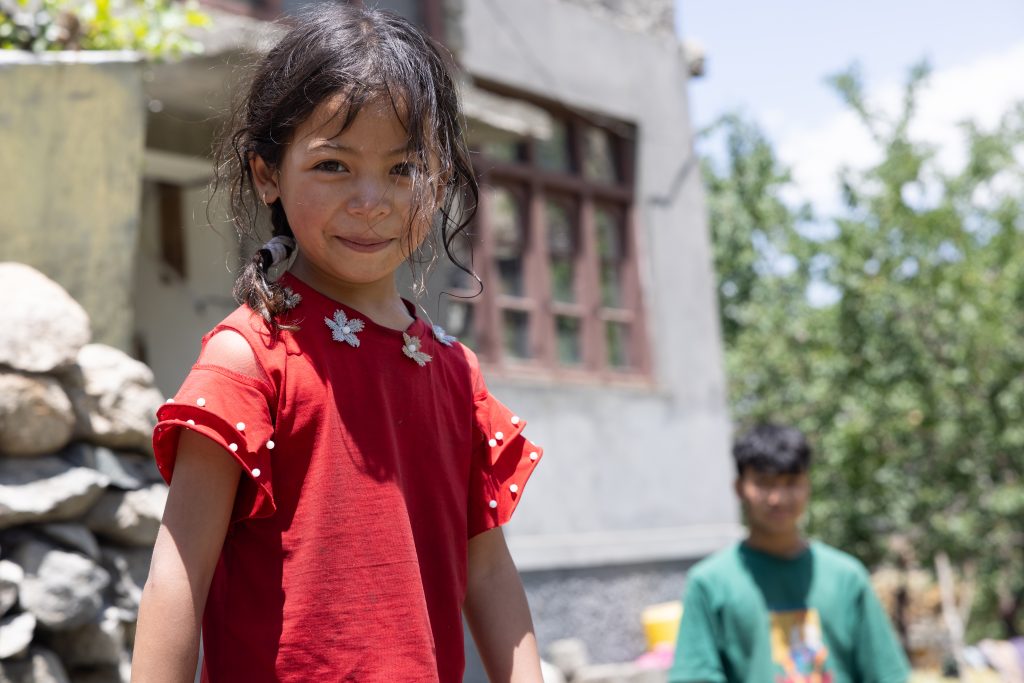On a crisp morning in Turtuk, a village perched at the edge of India, we stumbled upon a group of children laughing by a brook. They were splashing water, their faces alight with mischief, as if untouched by the challenges of their remote home. Their laughter was infectious, but beneath it lay a story of challenges, perseverance, and dreams tethered to an unsteady educational foundation.

When we asked these young learners about school, their answers were candid and thought-provoking. One common thread emerged: consistency.
The Struggle for Stability
Turtuk’s schools rely heavily on volunteer teachers, which brings passion and diversity but also creates a significant hurdle—frequent teacher turnover. As educators come and go, students must adapt to new teaching styles, often within the same academic year. It’s like resetting their learning journey repeatedly, leaving gaps in their understanding and stability.
For these children, textbooks in Hindi—a language they’re still mastering—pose an additional challenge. With limited access to resources, the classroom often becomes the only place they can attempt to make sense of unfamiliar words and concepts. But what happens when they don’t understand something during the lesson? Who do they turn to when the teacher is no longer around?
A Bridge Called the Internet

In our conversation, their wish was simple yet profound: access to the internet. They didn’t dream of games or entertainment; they dreamed of learning. They saw the internet as a tool to revisit lessons, seek explanations in Hindi, and build a solid foundation for their studies.
“If we had the internet,” one child said shyly, “we could find videos that explain our lessons better. If we don’t understand what the teacher says, we can learn it again.”
For them, the internet represents consistency in a world of constant change. It’s a bridge to revisit forgotten lessons, a tutor to clarify confusion, and a mentor that doesn’t leave. With online access, they could learn at their own pace, returning to concepts until they feel confident.
Education Beyond Borders

Turtuk’s story is a reminder of the power of connectivity. For these children, the internet isn’t just a tool—it’s a lifeline to stable, consistent education. It’s a way to overcome the barriers of language and geography. It’s an opportunity to dream beyond the confines of a remote village.
Imagine a world where a child in Turtuk, after struggling to understand a chapter in a Hindi textbook, could watch an engaging video that breaks it down step by step. Imagine a teacher thousands of miles away inspiring a love for science in a classroom they’ve never set foot in. Imagine the collective dreams of Turtuk’s children taking flight, powered by the endless possibilities of online learning.
Bridging the Digital Divide

Turtuk’s children showed us something we often forget: the internet isn’t just about convenience—it’s about equity. Their desire for connectivity isn’t driven by frivolity but by a hunger to learn, to grow, and to keep pace with the rest of the world.
As we walked away from the brook that day, the kids waved, their laughter echoing in the mountain air. But their voices stayed with us, a poignant reminder of why we do what we do. Bridging the digital divide isn’t just about technology; it’s about giving children like those in Turtuk a fair chance to rewrite their futures.
Let’s work to make their dreams a reality. One connection at a time

